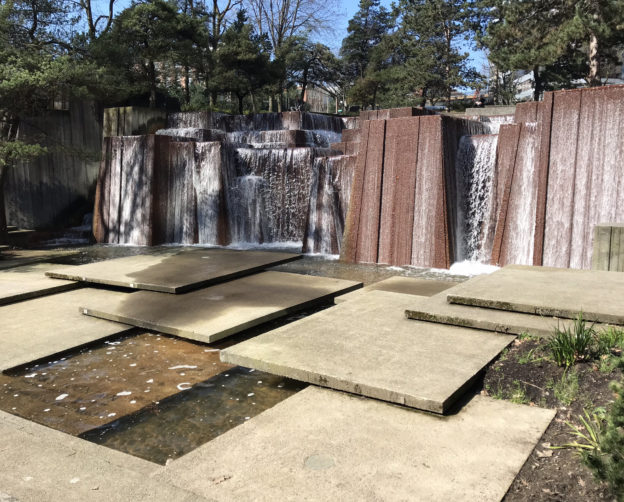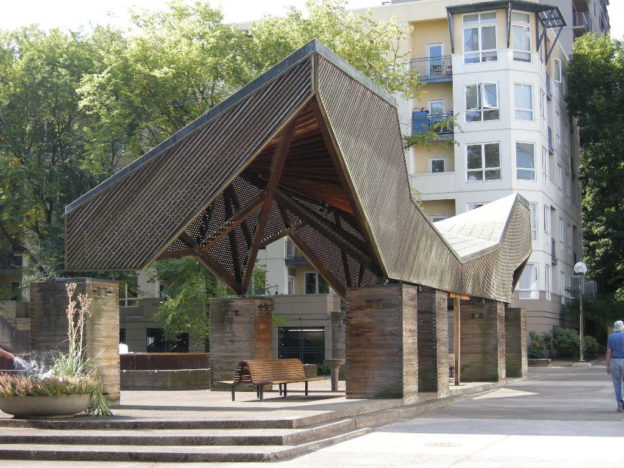The Keller and Lovejoy Fountains are part of the Halprin Open Space Sequence, designed by Lawrence Halprin and Associates, and constructed between 1963-1970. PMA provided historic materials conservation services to Portland Parks & Recreation for the current Open Space Sequence restoration project. Conservation for repair work included:
Exterior observations were performed from the ground and accessible portions of the fountains. Concrete cores were taken from each fountain in order to perform petrographic analysis of the materials. The purpose of the assessment was to provide PP&R with an understanding of the general condition of the concrete and provide repair recommendations/priorities to maintain and prolong the lifespan of the materials. For additional information on the history of the Open Space Sequence, please visit the Halprin Conservancy.



